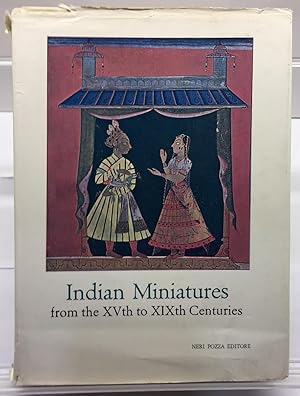Skelton Robert Foreword Archer (1 results)
Product Type
- All Product Types
- Books (1)
- Magazines & Periodicals
- Comics
- Sheet Music
- Art, Prints & Posters
- Photographs
- Maps
-
Manuscripts &
Paper Collectibles
Condition
- All Conditions
- New
- Used
Binding
- All Bindings
- Hardcover
- Softcover
Collectible Attributes
- First Edition
- Signed
- Dust Jacket
- Seller-Supplied Images
- Not Printed On Demand
Seller Location
Seller Rating
-
Indian Miniatures from the XVth to XIXth centuries
Published by Neri Pozza Editore, Veneza, 1961
Seller: Jorge Welsh Books, Lisboa, Portugal
Book
Hardcover. Condition: Good. Dust Jacket Included. English text.; Hardcover (with dust jacket); 16.5 x 22 cm ; 0.654 Kg; 119 pages plus appendix with 98 plates. Includes 12 colour and 105 black and white illustrations.; Used book with signs of wear on the dust jacket, namely some tears. The interior is in good condition.; Catalogue from the exhibition Indian Miniatures from the XVth to XIXth centuries.; "Drawn largely from the Panjab Hills, it reveals a strand in Indian painting the very reverse of Mughal. In certain cases, compositions and motifs derive from Mughal practice but the styles are neither delicate nor naturalistic. Colour is employed as a means to emotional intensity, shapes are simplified and there is often a wilful cultivation of the truculent, the harsh and bold. Particularly in the case of portraits from Mandi - here shown for the first time in logical progression and brilliantly identified - the figures are endowed with primitive vigour as if they awaited some stark encounter. In Basohli pirctures, large an eloquent eyes remind us of faces by Delvaux while, in a painting from Bundi, arms are as thinly attenuated as in a sculpture by Giacometti. Distortions of this kind are vitally Indian in spirit and they prove how close to modern conceptions are certain types of Indian art." excerpt from the foreword by W.G. Archer.


